Dayton, OH Pollen and Allergy Report for Summer 2023
Pollen Allergy Trends in Dayton, OH
When is pollen lowest in Dayton, OH?

February
Lowest month total PPM
Avg. PPM
When is pollen highest in Dayton, OH?

April
Highest month total PPM
Avg. PPM
How does pollen in Dayton, OH compare to Ohio?
Dayton has a lower average PPM than the state of Ohio.
Dayton yearly avg PPM:
Ohio yearly avg PPM:
How does pollen in Dayton, OH compare to the USA?
Dayton has a lower average PPM than the USA.
Dayton yearly avg PPM:
USA yearly avg PPM:
Is pollen worse this year in Dayton, OH?
Spring 2023 was worse than spring 2022.
Spring 2023 PPM:
Spring 2022 PPM:
Average PPM in Dayton, OH
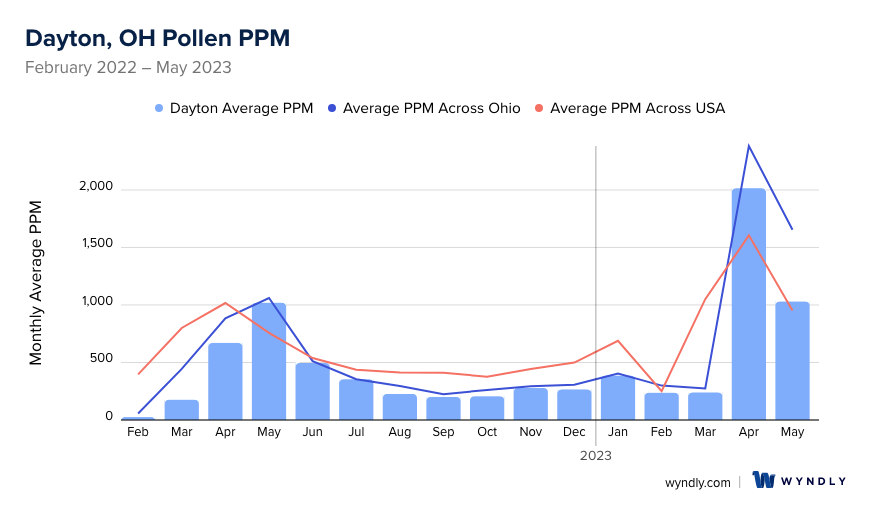
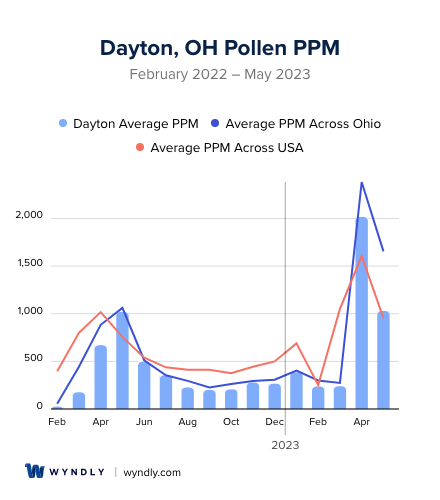
Dayton, OH Pollen and Allergy Breakdown by Month
Grass
When is grass pollen highest in Dayton, OH?
April has the highest grass pollen in Dayton, OH with an average PPM of
When is grass pollen lowest in Dayton, OH?
October has the lowest grass pollen in Dayton, OH with an average PPM of
Tree
When is tree pollen highest in Dayton, OH?
April has the highest tree pollen in Dayton, OH with an average PPM of
When is tree pollen lowest in Dayton, OH?
February has the lowest tree pollen in Dayton, OH with an average PPM of
Weed
When is weed pollen highest in Dayton, OH?
April has the highest weed pollen in Dayton, OH with an average PPM of
When is weed pollen lowest in Dayton, OH?
February has the lowest weed pollen in Dayton, OH with an average PPM of
Dayton, OH Pollen Monthly Breakdown by Pollen Type
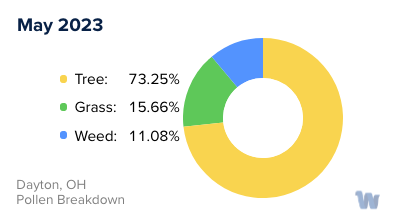
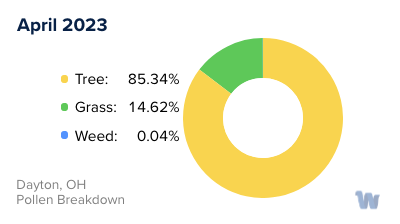
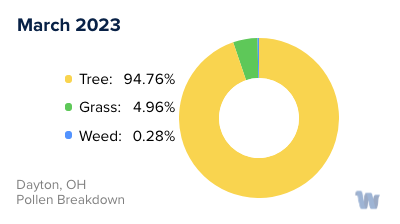
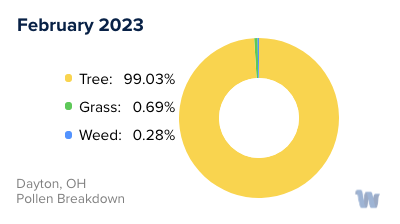
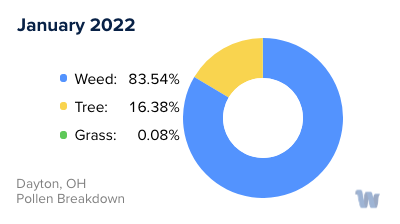
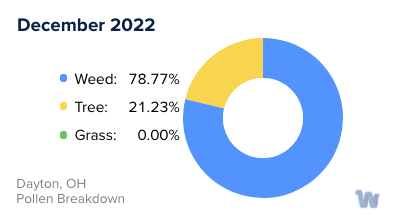
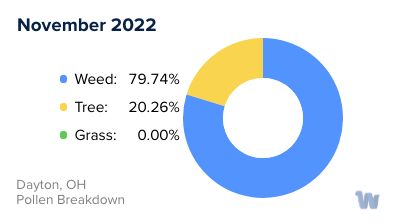
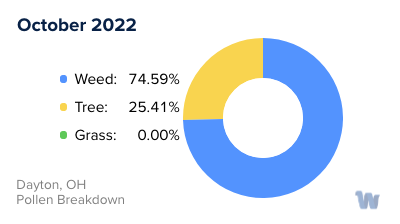
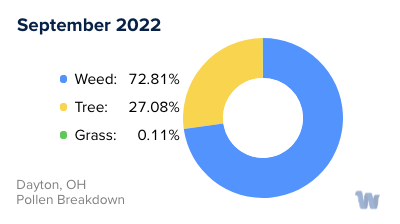
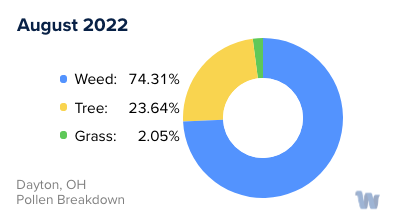
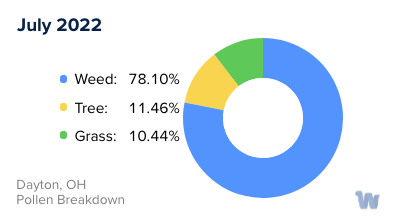
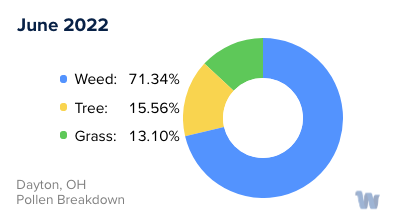
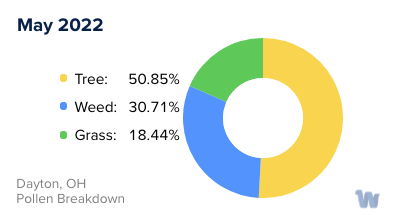
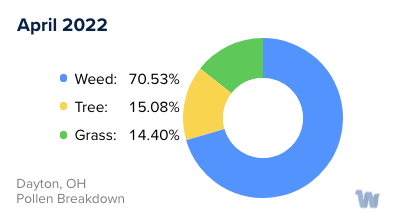
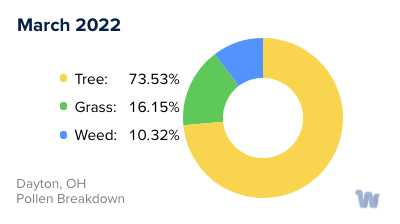
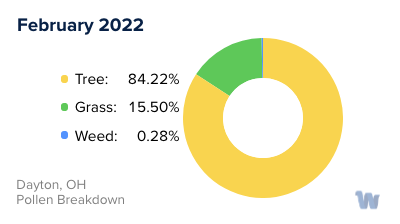
Pollen and Hay Fever in Dayton, OH
In the bustling city of Dayton, Ohio, the changing of the seasons brings with it an array of vibrant colors and scents. Among these are the invisible particles that fill the air: pollen. For those with allergies, this can be a challenging time.
In Dayton, as with the rest of Ohio, spring ushers in a season of tree and grass pollen. Trees typically start to pollinate first, with this process kicking off in April and continuing through May. Some trees begin their pollination in early spring, while others pollinate more towards the middle of the season. An interesting fact about this process is that the timing and intensity of the pollen season can be influenced by the weather. For example, a cold spring with late frosts and freezing rain could lead to a shorter pollen season, with trees not pollinating as heavily in the early spring. However, recent observations suggest that the start of the pollen season might be arriving a bit earlier these days.
In Ohio, the most common trees contributing to spring pollen allergies include Birch, Maple, Oak, Sycamore, Hickory, Walnut, Elm, Cottonwood, Ash, and Pine. Many of these trees are prevalent across the Midwest and, interestingly, tree pollen tends to be more "sticky" than other types of pollen. As a result, it may adhere more readily to the eyes, leading to symptoms such as itchy and puffy eyes. Tree pollen is also notorious for causing nasal symptoms, such as a runny nose, sneezing, congestion, and even sinus or ear infections. In more severe cases, it can even trigger asthma symptoms, such as coughing, wheezing, or shortness of breath.
Following the tree pollen season, grass pollen takes center stage, typically predominating from mid-May through June. A telltale sign of the onset of the grass pollen season in Dayton is the fluffy, white cottonwood seed that begins to float in the air in May.
Lastly, although not as prevalent in spring, it's worth noting that weeds such as ragweed do not begin to pollinate until later in the summer.
So, whether you're a Dayton native or a visitor exploring this charming city, it's helpful to be aware of these pollen seasons and how they might affect you, especially if you have allergies. Despite these seasonal challenges, Dayton continues to be a city full of beauty and vibrant life throughout the year.

